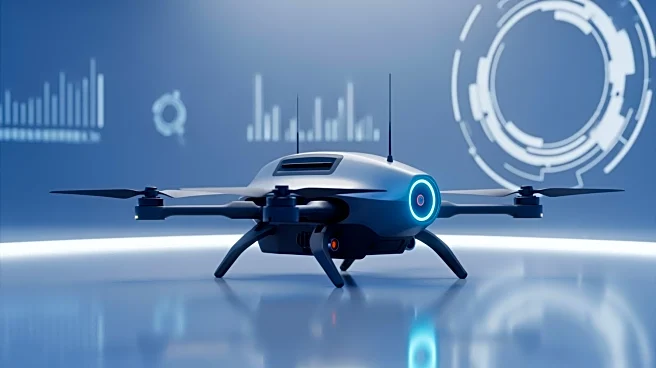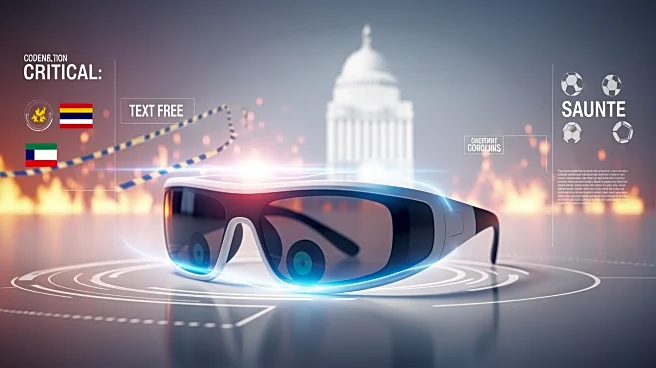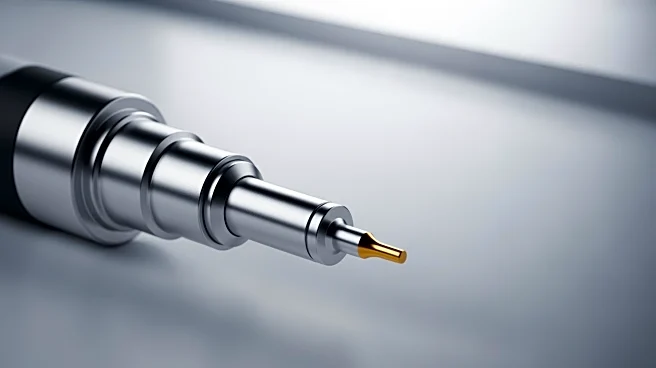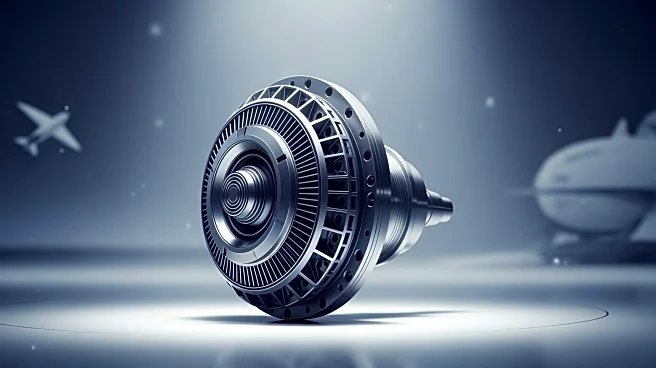What's Happening?
Recent advancements in microchip technology have led to the development of a monolithically integrated triaxial high-performance high-g accelerometer designed for high shock vibration signal measurements. This accelerometer, composed of a glass cover,
a silicon structure, and a glass backplane, is capable of measuring impact acceleration signals in three directions (x, y, and z) with high precision. The use of SOI silicon wafers and ICP/RIE dry etching technology allows for precise control of the structure size, enhancing sensor performance. The accelerometer's design includes piezoresistive beams that maximize sensitivity by undergoing pure axial deformation, which optimizes the utilization of deformation energy. The device has been tested for its dynamic performance and sensitivity using a Hopkinson bar impact-test system, showing promising results in terms of sensitivity and natural frequency.
Why It's Important?
The development of this high-g accelerometer is significant for industries requiring precise shock and vibration measurements, such as aerospace, automotive, and defense sectors. The ability to accurately measure high shock vibrations can lead to improved safety and performance in applications like crash testing and structural health monitoring. The accelerometer's high sensitivity and natural frequency make it suitable for environments with high dynamic range and fast amplitude changes, potentially leading to advancements in the design and testing of high-performance vehicles and equipment. This technology could also drive innovation in microchip manufacturing, emphasizing the importance of precision and reliability in sensor technology.
What's Next?
Further testing and evaluation of the accelerometer are necessary to address fabrication errors and improve the accuracy of piezoresistors. The development team may focus on refining the manufacturing process to enhance the device's performance and reliability. Additionally, the accelerometer's application in various industries could lead to collaborations with companies in aerospace and automotive sectors, aiming to integrate this technology into their systems. The ongoing research and development in microchip technology will likely continue to push the boundaries of sensor capabilities, leading to more sophisticated and efficient solutions for high-impact environments.
Beyond the Headlines
The ethical and legal implications of using advanced accelerometers in surveillance and monitoring systems could become a topic of discussion. As these devices become more integrated into security and defense applications, concerns about privacy and data security may arise. Additionally, the environmental impact of semiconductor manufacturing processes, such as the use of SOI silicon wafers, could prompt discussions on sustainable practices in the industry. The balance between technological advancement and ethical considerations will be crucial as microchip technology continues to evolve.













